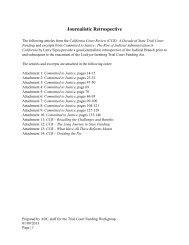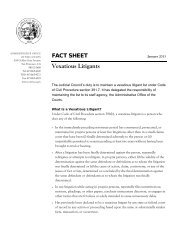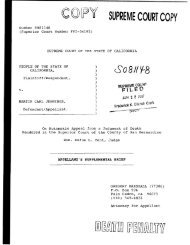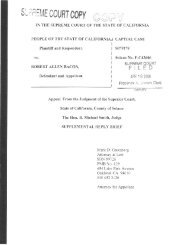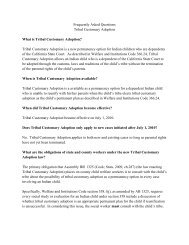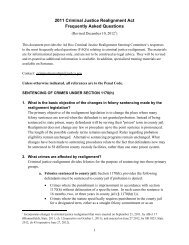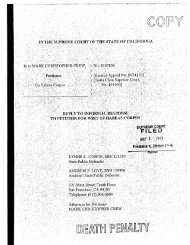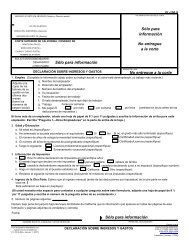Appellant, William Satele, Reply Brief - California Courts - State of ...
Appellant, William Satele, Reply Brief - California Courts - State of ...
Appellant, William Satele, Reply Brief - California Courts - State of ...
You also want an ePaper? Increase the reach of your titles
YUMPU automatically turns print PDFs into web optimized ePapers that Google loves.
compels reversal unless respondent has "prove[d] beyond a reasonable doubt that<br />
the error ... did not contribute to" the jury's verdict. (Chapman v. <strong>California</strong>,<br />
supra, 386 U.S. at p. 24.)<br />
Respondent contends overwhelming evidence <strong>of</strong> a gang purpose rendered<br />
any instructional error harmless under either the standard <strong>of</strong> Watson or <strong>of</strong><br />
Chapman. (RB at p. 172.) Respondent is wrong.<br />
In the opening brief (AOB at pp. 78-79), appellant made the following<br />
points with regard to the effect <strong>of</strong> the instructional error: (1) appellant neither<br />
conceded nor admitted the omitted elements <strong>of</strong> the sentence enhancement, so the<br />
instructional error may not be found harmless on that basis (Carella v. <strong>California</strong>,<br />
supra, 491 U.S. at p. 271 (cone. opn. <strong>of</strong> Scalia, J.); (2) the jury was not called<br />
upon to find the omitted elements as predicate facts in the resolution <strong>of</strong>appellant's<br />
guilt <strong>of</strong> the substantive <strong>of</strong>fenses (Ibid.); (3) the jury refused to find the hate<br />
crime special circumstance allegations to be true and thus rejected the<br />
prosecution's theory that appellant killed for reasons related to his gang<br />
membership (the prosecution's theory was that appellant was a West Side Wilmas<br />
(WSW) gang member motivated by the culture <strong>of</strong>his particular gang to shoot and<br />
kill Robinson and Fuller because they were African-Americans); (4) implicit in<br />
the jury's rejection <strong>of</strong> the hate crime special circumstance allegations and by<br />
extension the prosecution's theory is the jury's rejection <strong>of</strong> the contention that<br />
Robinson and Fuller were murdered for gang-related reasons, the gravamen <strong>of</strong>the<br />
sentence enhancement in issue here; (5) the foregoing suggests that a properly<br />
instructed jury would not have found the sentence enhancement to be true; and (6)<br />
no other properly given instruction required that the jury resolve the factual<br />
questions in issue in the omitted instruction. Thus, it may not be said that the<br />
jury's verdict on other points resolved the factual issues necessary to a finding <strong>of</strong><br />
the sentence enhancement. (<strong>California</strong> v. Roy (1997) 519 U.S. 2.)<br />
In its brief, respondent fails to respond to or argue a single one <strong>of</strong> these<br />
points and thereby essentially concedes them. (People v. Adams (1983) 143<br />
46



